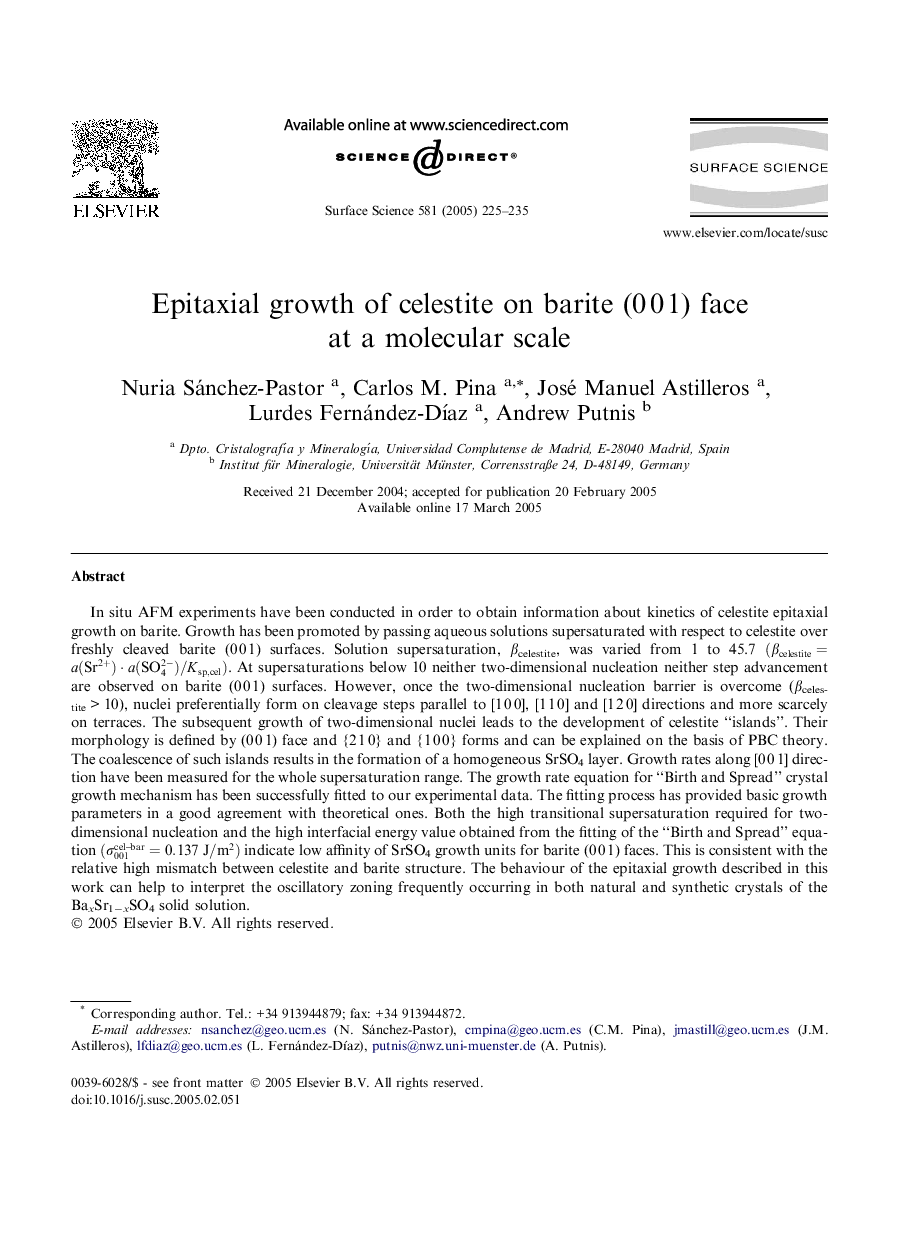| Article ID | Journal | Published Year | Pages | File Type |
|---|---|---|---|---|
| 9594944 | Surface Science | 2005 | 11 Pages |
Abstract
In situ AFM experiments have been conducted in order to obtain information about kinetics of celestite epitaxial growth on barite. Growth has been promoted by passing aqueous solutions supersaturated with respect to celestite over freshly cleaved barite (0 0 1) surfaces. Solution supersaturation, βcelestite, was varied from 1 to 45.7 (βcelestite=a(Sr2+)·a(SO42-)/Ksp,cel). At supersaturations below 10 neither two-dimensional nucleation neither step advancement are observed on barite (0 0 1) surfaces. However, once the two-dimensional nucleation barrier is overcome (βcelestite > 10), nuclei preferentially form on cleavage steps parallel to [1 0 0], [1 1 0] and [1 2 0] directions and more scarcely on terraces. The subsequent growth of two-dimensional nuclei leads to the development of celestite “islands”. Their morphology is defined by (0 0 1) face and {2 1 0} and {1 0 0} forms and can be explained on the basis of PBC theory. The coalescence of such islands results in the formation of a homogeneous SrSO4 layer. Growth rates along [0 0 1] direction have been measured for the whole supersaturation range. The growth rate equation for “Birth and Spread” crystal growth mechanism has been successfully fitted to our experimental data. The fitting process has provided basic growth parameters in a good agreement with theoretical ones. Both the high transitional supersaturation required for two-dimensional nucleation and the high interfacial energy value obtained from the fitting of the “Birth and Spread” equation (Ï001cel-bar=0.137J/m2) indicate low affinity of SrSO4 growth units for barite (0 0 1) faces. This is consistent with the relative high mismatch between celestite and barite structure. The behaviour of the epitaxial growth described in this work can help to interpret the oscillatory zoning frequently occurring in both natural and synthetic crystals of the BaxSr1âxSO4 solid solution.
Related Topics
Physical Sciences and Engineering
Chemistry
Physical and Theoretical Chemistry
Authors
Nuria Sánchez-Pastor, Carlos M. Pina, José Manuel Astilleros, Lurdes Fernández-DÃaz, Andrew Putnis,
